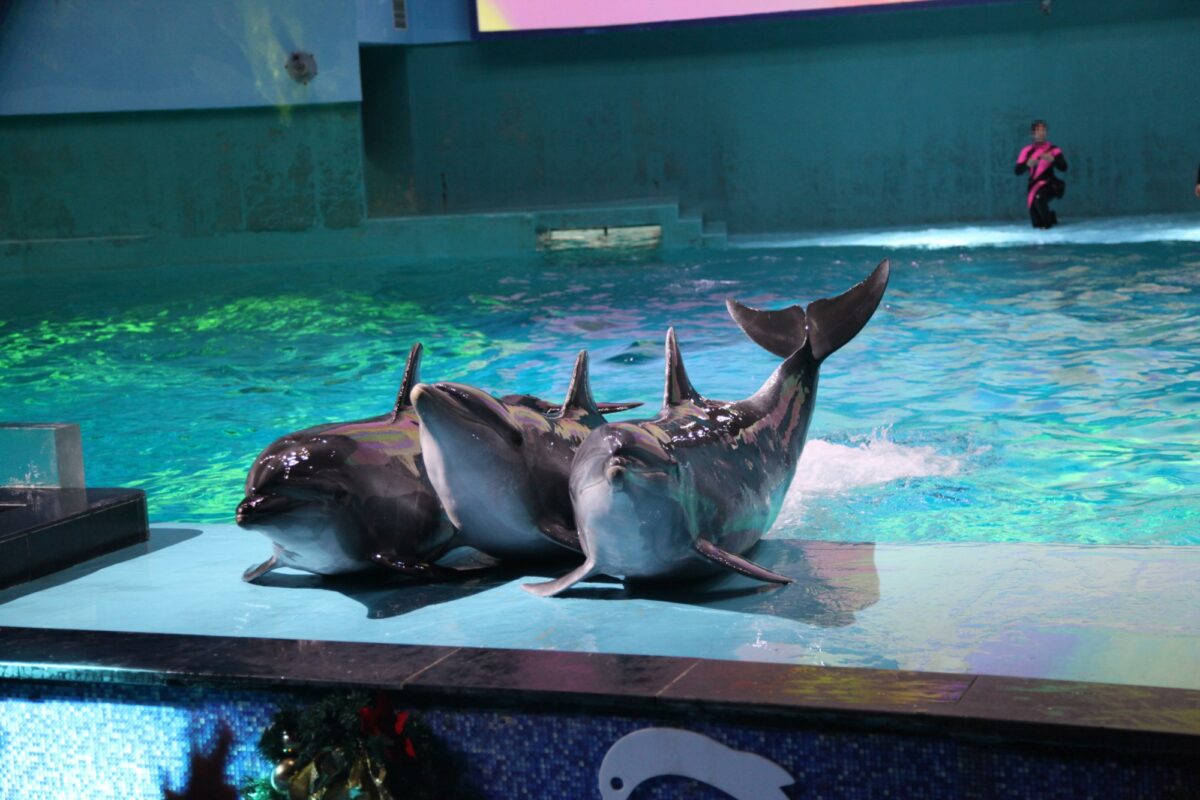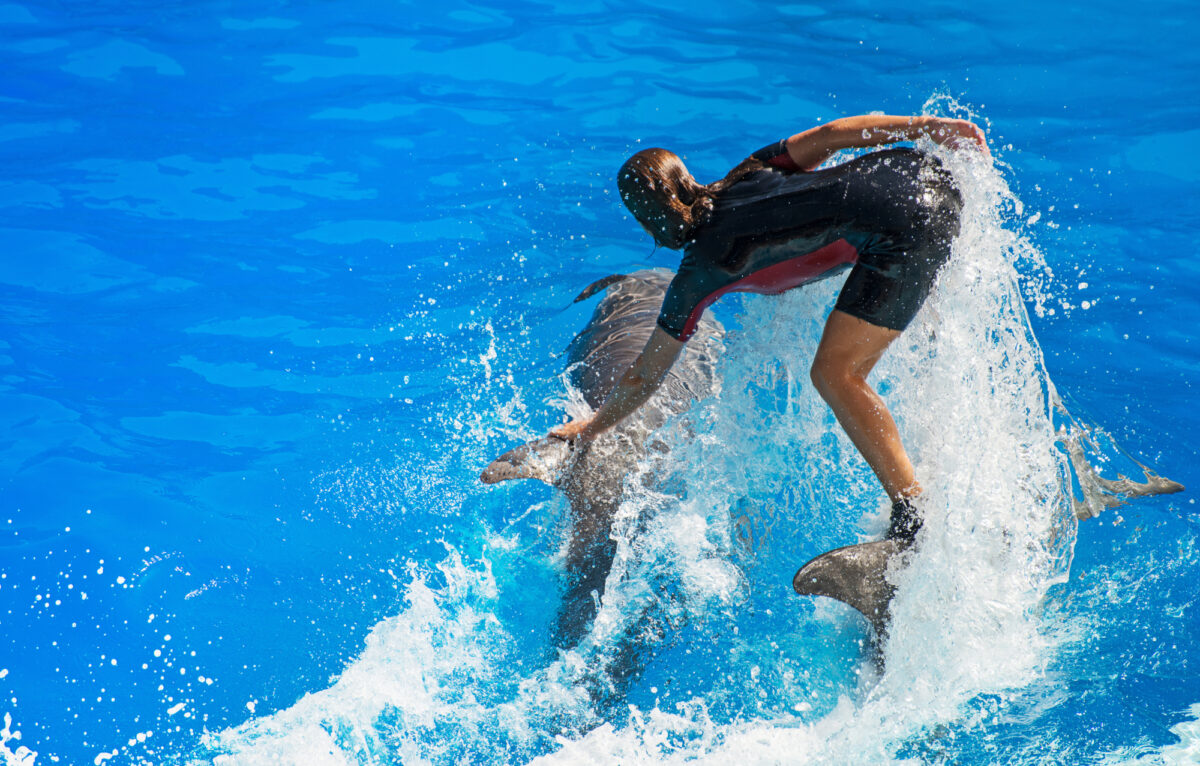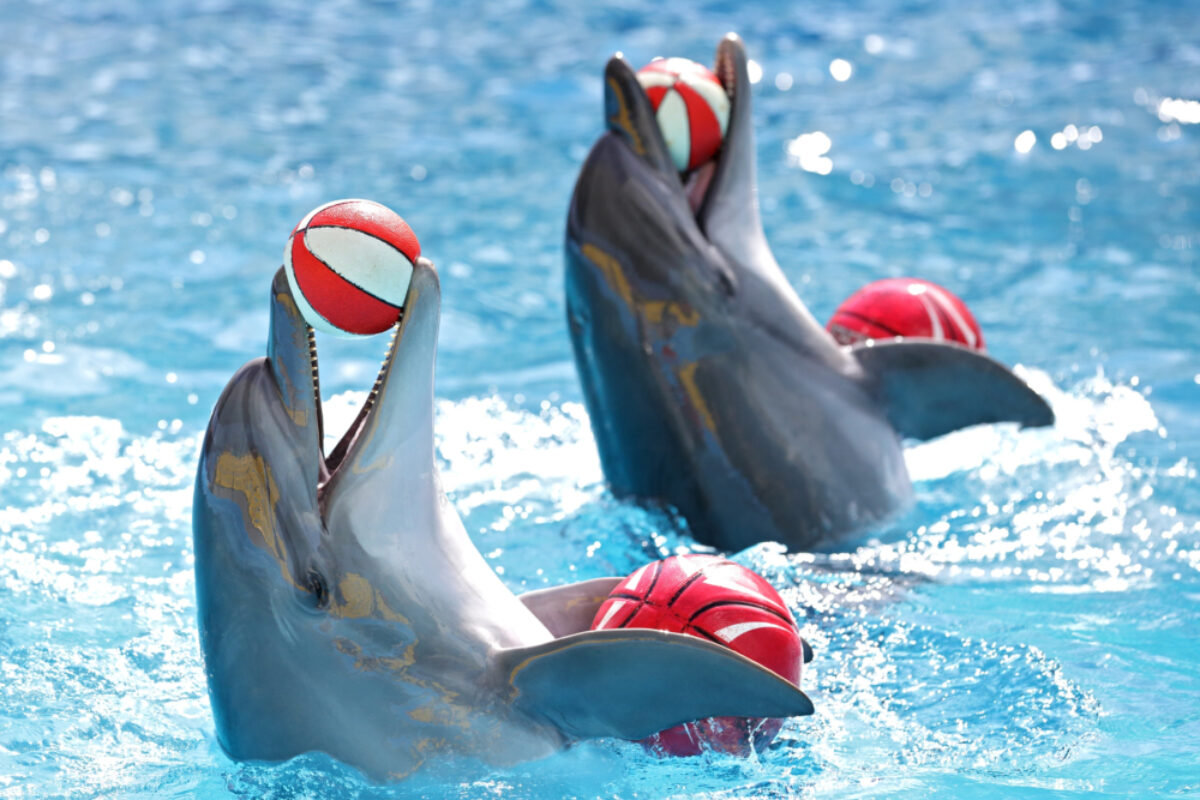Tiny tanks, rake marks and boredom: Why it's time to end dolphin shows
The cruelty of keeping dolphins in captivity
Dolphinaria are a vastly profitable multi-billion-dollar entertainment industry. More than 3,000 dolphins are involved worldwide, and from capture to breeding and being forced to live in inhumane barren tanks, dolphins suffer at every stage of their captivity — all for-profit and human amusement.
World Animal Protection estimates that captive dolphins generate between $1.1 and $5.5 billion from ticket sales annually. The research in our Behind the Smile report (2019) represents the first comprehensive assessment of the global dolphin industry. We found that 66% of dolphins, at 233 venues identified, were kept in concrete tanks. Of the 233 venues keeping dolphins in tanks, 95 venues used only indoor tanks, keeping 575 dolphins in conditions where they never experience sunlight or changes in weather.
The average size of the largest tank used at dolphin facilities is just 444sq/m — 200,000 times smaller than their natural home range and only slightly larger than the average IMAX movie screen. It’s this captive setting that is the biggest concern — they may look clean and shiny, but these conditions can never provide the stimulus of the ocean environment these intelligent, socially complex wild marine mammals need to thrive in.

Dolphins performing at an entertainment park in China. Photo credit: World Animal Protection
The impact on dolphins
Calves are often separated from their mother at far younger ages than they would be in the wild, where dolphin calves remain with their mothers for between three and six years.
Some venues, such as SeaWorld, justify early separation by stating that the time mothers and calves need to spend with each other in captivity is much shorter. They claim this is because calves do not need to learn foraging techniques or predator avoidance behaviours.
However, dolphins are complex social animals and their behavioural development covers far more than just this.
Social behaviour, for example, is constantly developing and requires a healthy family and pod structure. Mental and physical stimulations, including learning how to avoid predators, can help develop complex behaviours. Removing these stimulations and replacing them with sterile environments such as tanks is detrimental to the welfare of these highly intelligent animals.
The early separation of calves from their mothers makes captive-bred dolphins less likely to survive reintroduction in the wild, making them worthless for conservation breeding efforts — and conservation is one of the main justifications dolphin venues make for their existence.

Tricks and performances are far from natural dolphin behaviour.
Training and feeding
Training a dolphin for shows often involves food deprivation, reducing animals to little more than beggars. Their lives revolve around the food presented during shows and training sessions. We found that 93% of dolphin facilities worldwide offer shows with dolphins. The tricks performed during shows include dolphins pulling their trainers through the water by their fins, and trainers ‘surfing’ on the dolphin’s back or being propelled out of the water by the dolphin’s snout. Often, dolphins are made to leave the water to spin in circles, or wear hats and oversized glasses — and all to music similar to the volume of a rock concert.
Some of the behaviours you see in shows are naturally occurring behaviours, but many are merely based on natural behaviours that are performed out of context. It’s absurd to suggest that just because a dolphin may jump out of the water in the wild, jumping through a hoop in return for a piece of dead fish as a way of alleviating the boredom of a life spent in a tank is normal.
The diet of captive dolphins is also a concern. Frozen, then thawed, fish is lower in nutritional value than live fish. Frozen fish alone cannot provide adequate nutrition or even adequate water content.
‘Tubing’ is a common practice — literally force-feeding a dolphin the water it needs by shoving a tube down its throat. Prophylactic antibiotics are regularly given to captive dolphins and whales, alongside routine administration of anti-ulcer medications and antifungals. Fungal infections are common in captive marine mammals.
Ultimately, it is the dolphin’s captive setting which is fundamentally inhumane, due to the lack of space. All dolphin shows represent a life sentence from which the dolphin cannot escape. Dolphins suffer both psychologically and physically because of the inadequate size and design of the tanks. In the wild, dolphins are free to interact or avoid other individuals as they choose. In captivity, where decisions on groupings are driven by commercial need, this is not the case.
Group sizes in captive facilities usually consist of two to four dolphins per tank only. This is much smaller than average pod sizes in the wild. Abnormal aggressive interactions can occur in captive groupings where dolphins ‘rake’ their teeth against other dolphins as an act of dominance.
Although dolphins do rake each other in the wild as part of determining social hierarchy, once dominance is established, they remain relatively stable. In captivity, groupings are often changed for husbandry reasons and thus hierarchies must be re-established regularly.
Captive cetaceans suffer from far more dental problems than their wild counterparts, and a major factor in these is self-mutilation. Bored and frustrated by their captivity, cetaceans persistently grind their teeth against the concrete of their tanks, or bite down on metal bars between tanks, breaking their teeth. This is not seen in wild cetaceans.

Captive dolphins cannot get sufficient nutrition from frozen fish.
What you need to know
Dolphin venues make false or wildly exaggerated claims regarding the benefits to conservation, education and research, fooling the public into accepting the inhumanity of cetacean captivity. Millions of people still visit captive dolphin facilities because of this. The truth is that keeping dolphins in captivity for entertainment offers no genuine benefit to conservation and scant educational benefits, despite claims to the contrary from dolphin entertainment venues. So we need to continue debunking these myths.
We need to help people to see behind the ‘smile’ of the dolphin, and the marketing of the industry — when you take away the music, the dancing, the shiny wetsuits, the anthropomorphising of dolphin behaviour at these facilities, what you’re left with is wild animals being held captive in tiny concrete boxes.
If someone is thinking about going to see dolphins in captivity, we need to encourage them towards a responsible experience in the wild. In the wild, dolphins are completely free, live in their natural habitat and can undertake all of their natural behaviours, such as hunting, foraging, resting, playing and travelling.
Responsible dolphin watching tours can be incredibly rewarding. Once you’ve seen a dolphin in the wild where it has freedom of choice, it’s difficult to accept they could ever thrive in captivity.




